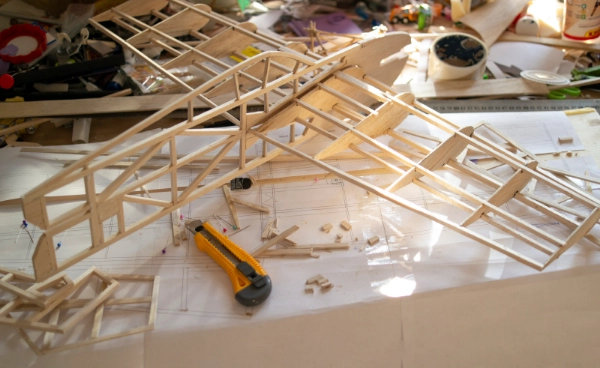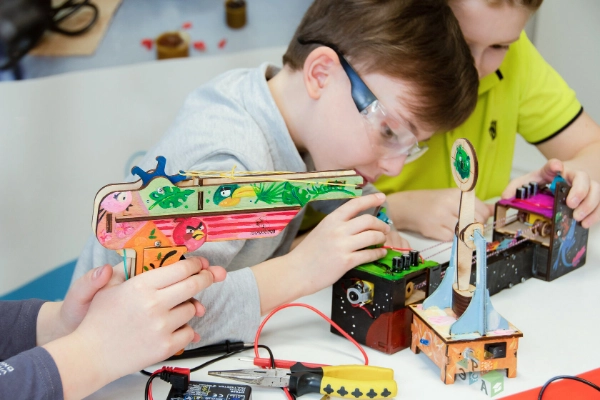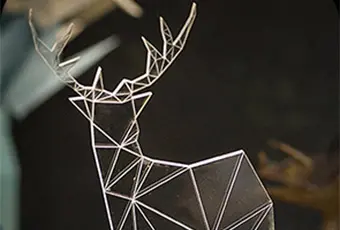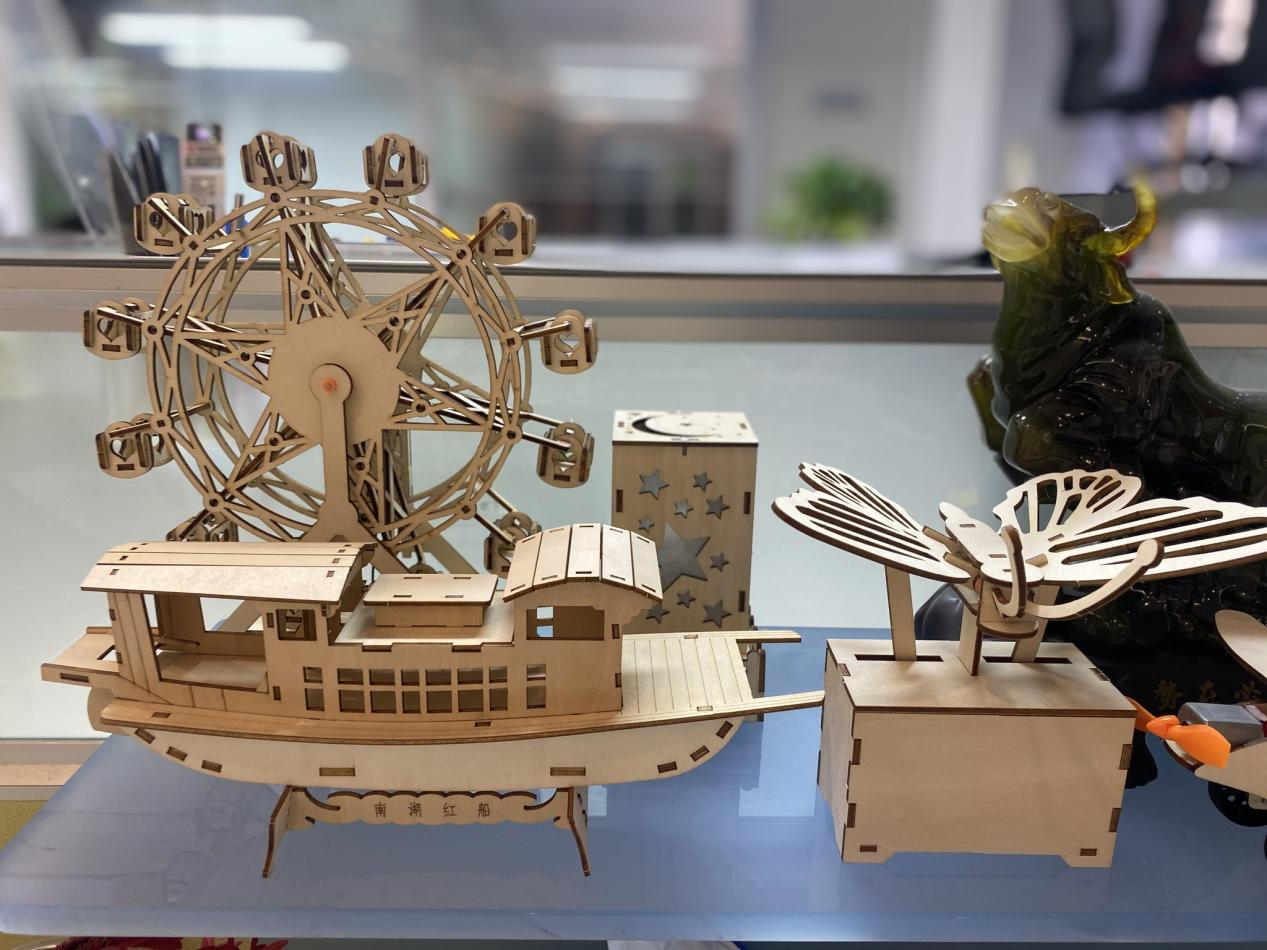Unlocking Creativity in the Classroom: Benefits of 3D Wood Laser Cutter for Schools
Technology is gradually integrated into the classroom, and teachers and students alike benefit from tools that foster creativity, critical thinking, and hands-on learning. In this blog post, as a high performance CO2 laser cutting machine supplier, Good-Laser will share the benefits of 3D wood laser cutter for schools, enabling students to design, create, and bring their ideas to life in ways that were once only possible in professional studios.
What is 3D Wood Laser Cutter for Schools?
A 3D wood laser cutter is a precise, high-tech tool that uses a laser to cut, engrave, and etch designs onto wooden surfaces. The "3D" aspect refers to its ability to create intricate, layered cuts or engravings, which can add depth and dimension to a project. It is typically controlled by a computer, which allows for complex, custom designs to be inputted and then brought to life on the wood surface.

Benefits of 3D Wood Laser Cutter for Schools
1. Encouraging STEM Learning
The integration of a 3D wood laser cutter in schools offers significant benefits for STEM (Science, Technology, Engineering, and Mathematics) education. Students can engage in activities that blend design, engineering, and technology in a way that promotes both creative and analytical thinking.
For example, in a project involving the creation of architectural models, students could use the laser cutter to carve out intricate building designs from wood, giving them a practical understanding of engineering principles. This hands-on learning experience allows students to see the immediate impact of their designs and learn from the process of trial and error.
2. Fostering Creativity and Innovation
Creativity is at the heart of any artistic or design-based education. A 3D wood laser cutter encourages students to think outside the box and create projects that go beyond traditional paper and pencil designs. Whether it' s crafting personalized gifts, designing custom school signs, or constructing detailed models, students can push the boundaries of what' s possible with wood as a medium.
A laser cutter also provides the opportunity for students to experiment with different materials, allowing for unique textures, layers, and finishes. The ability to engrave fine details into the wood, such as patterns, text, or logos, opens up a world of possibilities for design students.
3. Enhancing Problem-Solving Skills
The use of a 3D wood laser cutter helps students develop essential problem-solving skills. Working with this technology requires planning, precision, and attention to detail. Students must first conceptualize their designs, then break them down into the necessary steps to create the final product. Along the way, they will likely encounter challenges that require creative solutions, such as adjusting designs for fit, scaling models, or overcoming technical issues with the machine.
These types of real-world challenges build critical thinking and troubleshooting abilities, skills that are transferable to many future career paths.

4. Hands-On Learning
The tactile nature of a 3D wood laser cutter makes it a powerful tool for hands-on learning. Rather than simply reading about a concept or watching a demonstration, students are actively involved in the creation process. This immersive experience helps reinforce what they' ve learned and gives them a sense of accomplishment when they complete a project.
The hands-on aspect is particularly important for younger students or those who struggle with traditional learning methods. By using tools like the laser cutter, students can engage with subjects in a more interactive and enjoyable way.
5. Collaboration and Teamwork
Many projects that involve 3D wood laser cutters are designed to be collaborative. Students can work together in teams to brainstorm ideas, design projects, and operate the laser cutter. This fosters teamwork and communication, which are essential skills both in school and in the workforce.
For instance, a group of students may collaborate to create a wooden puzzle, an educational tool, or a piece of art for the school. This kind of collaboration encourages the sharing of ideas, constructive criticism, and joint problem-solving, all while building a sense of community within the classroom.
6. Preparing Students for Future Careers
The world is increasingly driven by technology, and the demand for skilled workers in fields like engineering, design, and manufacturing is on the rise. By incorporating tools like a 3D wood laser cutter into the curriculum, schools can provide students with valuable experience in these areas.
Not only does it give students exposure to advanced technology, but it also teaches them important skills like CAD (computer-aided design) modeling, which is essential in industries like architecture, product design, and engineering. This hands-on exposure can help spark an interest in pursuing further education or careers in these fields, offering students a head start in their professional lives.
Conclusion
The 3D wood laser cutter for schools is more than just a machine; it' s a gateway to innovation, creativity, and hands-on learning. By incorporating this technology into the classroom, schools can inspire students to explore new possibilities, think critically, and develop practical skills that will serve them well throughout their education and beyond. Whether it's creating art, building prototypes, or learning to design with precision, a 3D wood laser cutter can unlock a whole new world of learning potential. With its many benefits, it' s clear that this tool is an invaluable resource for any school looking to prepare students for the future.
Incorporating such technology into the classroom helps ensure that students are not only consumers of technology but also creators, ready to engage with the world in meaningful, innovative ways.



